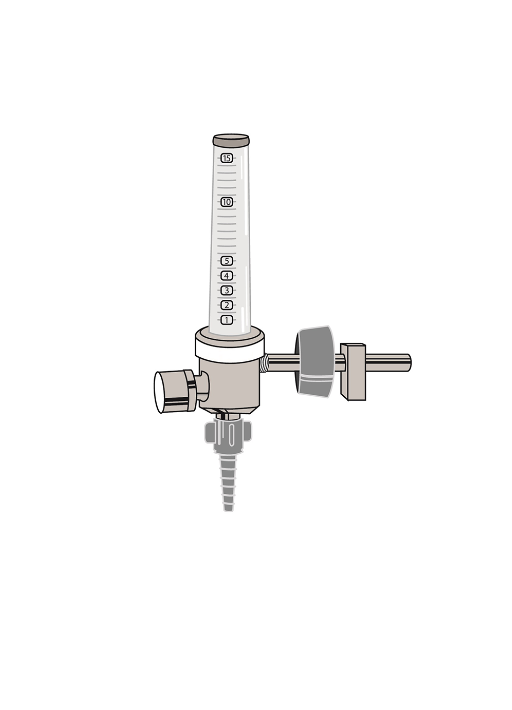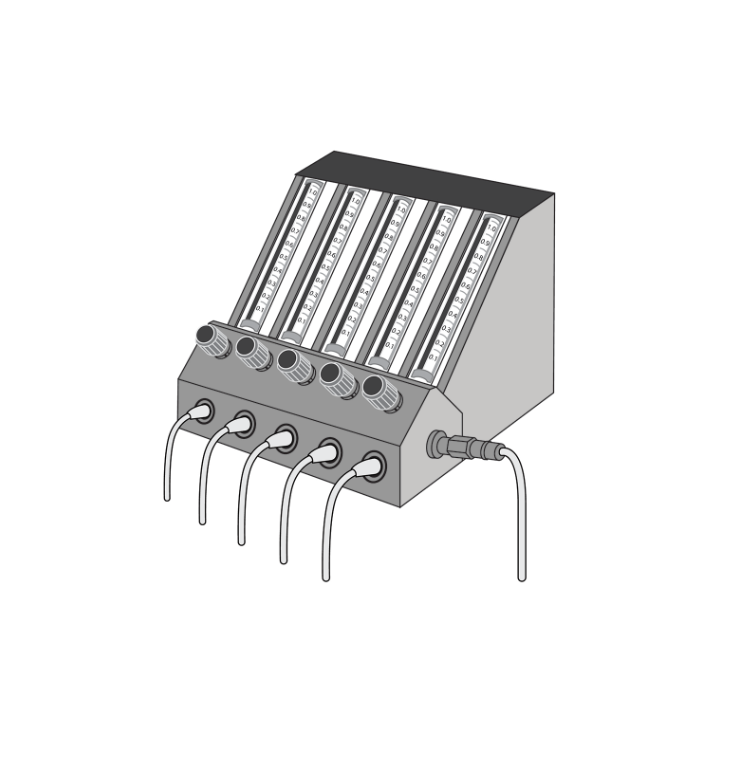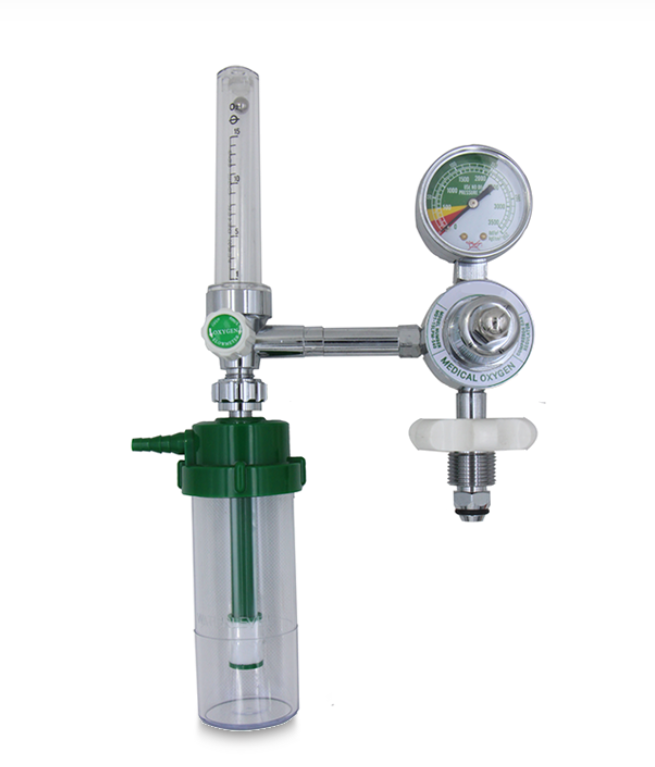So, you’re in the market for some oxygen cylinder accessories and equipment? Well, look no further, because we’ve got all the information you need right here! In this blog, we’re going to dive into the world of oxygen flowmeters, flowsplitters, and humidifiers. The cost of medical oxygen cylinders has always made them a favorite in healthcare and other settings. With the use of a few accessories, medical oxygen cylinder use can be made easier and even more cost-effective.
But first, let’s address the burning question: Why are these accessories even important? Well, they play a crucial role in regulating and conditioning the oxygen before it reaches the patients. You don’t want to be delivering unregulated oxygen to your precious patients, do you? Who benefits the most from these accessories? Newborns and patients with low flow requirements, of course! We need to make sure they get just the right amount of oxygen, no more, no less.
So, selecting the right accessories becomes vital. But don’t worry, we’ll cover all the key considerations for selecting the perfect flowmeter, flow splitter, and humidifier. It’s all about finding the right fit for your oxygen source, clinical use, and resources at your healthcare facility.
Let’s get started, shall we?
Why are Oxygen Cylinder Accessories Important?
If you thought the world of oxygen cylinders was all about the cylinders themselves, think again! Oxygen cylinder accessories are here to steal the limelight. Now, you might be wondering, why are these accessories so important. Here’s what you need to know:
● First and foremost, oxygen cylinder accessories play a crucial role in regulating and conditioning the oxygen before it reaches the patients. You see, oxygen therapy is not a one-size-fits-all situation. Different patients require different levels of oxygen flow, and that’s where these accessories come into the picture. They help control the flow and humidity of the oxygen, ensuring that it’s just right for each individual.
● Newborns and babies with low birthweights need extra special care when it comes to oxygen therapy. The tiniest of lungs can’t handle high oxygen flows, so these accessories are critical in managing low-flow situations. We definitely don’t want to cause any long-term health issues for these precious little bundles of joy.
● If you’ve ever found yourself wondering how long a medical oxygen cylinder lasts and whether you can make it last longer, these accessories can definitely help!
When it comes to selecting and utilizing these accessories, there are a few factors to consider. You need to take into account the oxygen source, the clinical use, and the resources available at the health facility. After all, you want to make sure you’re choosing the right accessories that will meet the specific needs of your patients.
Types of Oxygen Cylinder Accessories
Let’s talk about the different types of accessories that make our lives so much easier when it comes to handling oxygen cylinders.
Flowmeters for Oxygen Cylinders
These little devices are responsible for measuring and controlling the rate of oxygen flow to patients. Whether you’re using piped oxygen, cylinders, or oxygen concentrators, flowmeters have got your back. There are three types of flowmeters: Thorpe tube, Bourdon gauge, and dial/click. Each one has its own flow ranges, so you can choose the perfect fit for your needs.

Source: UNICEF
Key Considerations for Selecting Flowmeters
When selecting flowmeters for your oxygen cylinder, there are a few key considerations to keep in mind.
1- Compatibility with the Oxygen Cylinder: You need to ensure that the flowmeter is compatible with your oxygen source, whether it’s piped oxygen, cylinders, or oxygen concentrators. You don’t want to end up with a flowmeter that doesn’t fit your setup, causing unnecessary frustration and inconvenience.
2- Flow range of the Flowmeter: The range should be suitable for your specific needs, whether it’s for newborns, low-flow applications, or higher-flow applications. For newborns and premature babies, ultra-low flow ranges with specific graduations are essential to ensure their safety and well-being.
3- Type of Flowmeter: Thorpe tubes, also known as rotameters, are the most commonly used flowmeters. They have an upright tube with a float to measure gas flow and a valve to control the rate of flow. It’s crucial to choose a flowmeter type that is reliable and easy to operate.
4- Pressure-reducing Valve, Outlet Adapter, or Humidifier: These accessories can enhance the performance and effectiveness of your flowmeter, so it’s worth considering them during the selection process.
Overall, selecting the right flowmeter for your oxygen cylinder involves considering compatibility, flow range, type, and any additional accessories required. By taking these key considerations into account, you can ensure convenience and ease of use for your oxygen therapy needs. So, choose wisely and breathe easy!
Flow Splitters for Oxygen Cylinders
Next on the list are flow splitters. These amazing contraptions are designed to split the flow of oxygen into multiple outlets. They are incredibly useful when you need to supply oxygen to multiple patients at once. No more fighting over who gets the oxygen first! Flow splitters ensure that everyone gets their fair share of that life-giving gas.

Source: UNICEF
Key Considerations for Selecting Flow Splitters
Why do we even need flow splitters?
Flowsplitters are an essential oxygen cylinder accessory that allows the distribution of oxygen to multiple patients simultaneously. Now, you can save time and cater to more patients in need. No more waiting in line for oxygen!
There are a few key considerations you need to keep in mind.
1-Flow Splitter and Your Oxygen Cylinder: Ensure that the flow splitter is compatible with your oxygen source. You don’t want any awkward compatibility issues, trust me.
2- Versatility of the Flow Splitter: You’ll want to choose a flow splitter that can handle different flow rates. After all, not all patients have the same oxygen needs.
3- Long-Lasting Quality of the Flow Splitter: Don’t forget to check the build quality and durability of the flow splitter. You don’t want it falling apart mid-flow.
Flow splitters are the ultimate accessory for conveniently sharing oxygen with multiple patients. Just remember to choose wisely, and you’ll be spreading the gift of oxygen like a pro.
Humidifiers for Oxygen Users
These nifty little accessories add moisture to the oxygen before it reaches the patient’s airways. This is especially important for patients who need long-term oxygen therapy, as dry air can cause irritation and discomfort. Humidifiers help keep the air flowing smoothly and comfortably.

Source: Sanai Health
With these gadgets by your side, you’ll be able to regulate and condition oxygen with ease. No more stressing over oxygen flow rates or dry air.
Remember, selecting the right accessories depends on various factors, like your oxygen source, clinical use, and resources. So make sure to consider all these factors before picking your oxygen cylinder accessories.
Key Considerations for Selecting Oxygen Humidifiers
Well, imagine breathing in dry air constantly. It would be like living in a desert, but even worse because you can’t escape it. Dry air can cause discomfort, and irritation, and can even damage the delicate tissues in the respiratory system. Oxygen humidifiers help to prevent these issues by moisturizing the oxygen, making it easier and more comfortable to breathe.
Humidifiers can also help to reduce congestion and improve the effectiveness of oxygen therapy. When the airways are dry, they can become congested, making it difficult for the oxygen to reach the lungs. By adding moisture to the oxygen, humidifiers can help clear the airways, allowing the oxygen to flow freely and reach its destination. Now, selecting the right oxygen humidifier is crucial.
1- Type of Oxygen Source: Different oxygen sources may require specific types of humidifiers for compatibility and efficiency. Choosing the correct humidifier for the oxygen source ensures optimal performance and patient comfort during therapy.
2- Patient’s Clinical Needs: Some may require continuous oxygen flow, while others need intermittent or high-flow oxygen therapy. The choice of humidifier should align with the patient’s specific requirements to ensure the therapy is effective and comfortable. For instance, patients with chronic respiratory conditions might benefit from a humidifier with adjustable settings to control moisture levels based on their comfort and clinical needs.
3- Resources of the Healthcare Facility: Some humidifiers may require more maintenance or specialized training for staff, which can impact the decision-making process. It’s important to assess the facility’s capabilities and limitations to ensure seamless integration of the chosen oxygen humidifier into the treatment process.
Remember, oxygen therapy is all about providing the best care and comfort for the patient. So, don’t neglect the importance of oxygen humidifiers. Also, remember to learn how to store medical oxygen cylinders and their equipment for a safer experience.
Medical Oxygen Cylinders and Ease of Use
The different oxygen cylinders and sizes can all easily be managed in healthcare facilities with the use of proper accessories like the flowmeter, flow splitters, and humidifier. It is important that when hospitals and users buy medical oxygen cylinders ensure that they get accessories to help them have a better experience with the oxygen cylinders.
You can browse our collection to view humidifiers and pressure regulators for your medical oxygen cylinders. Sanai Health can also easily equip with you a high-quality and long-lasting medical oxygen cylinder at a good price!

